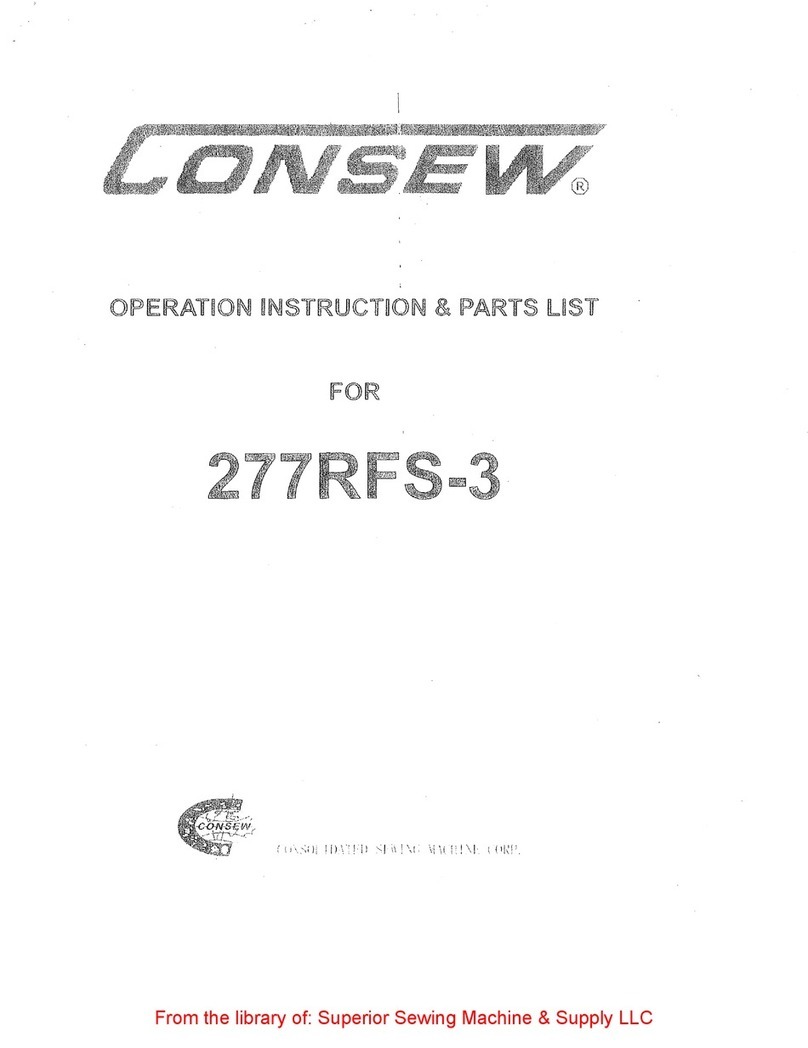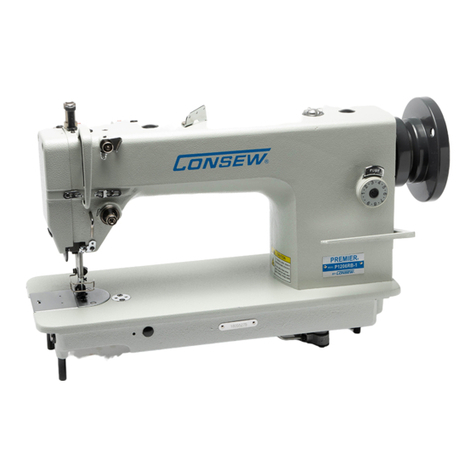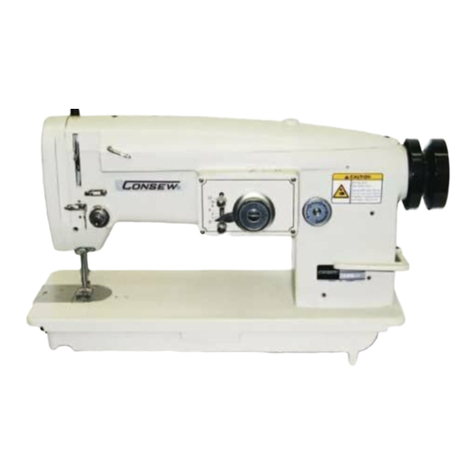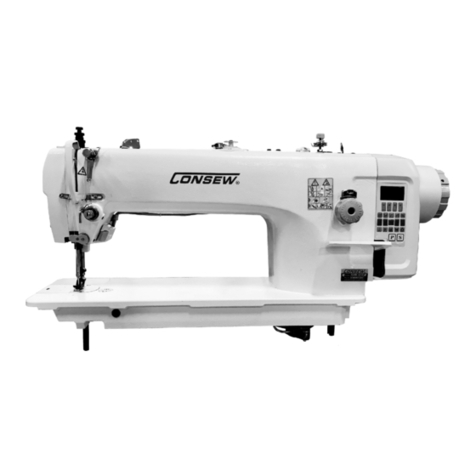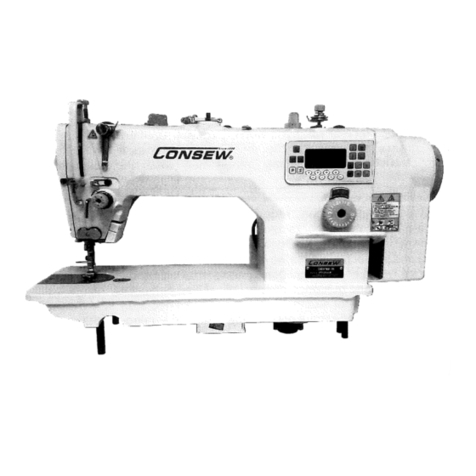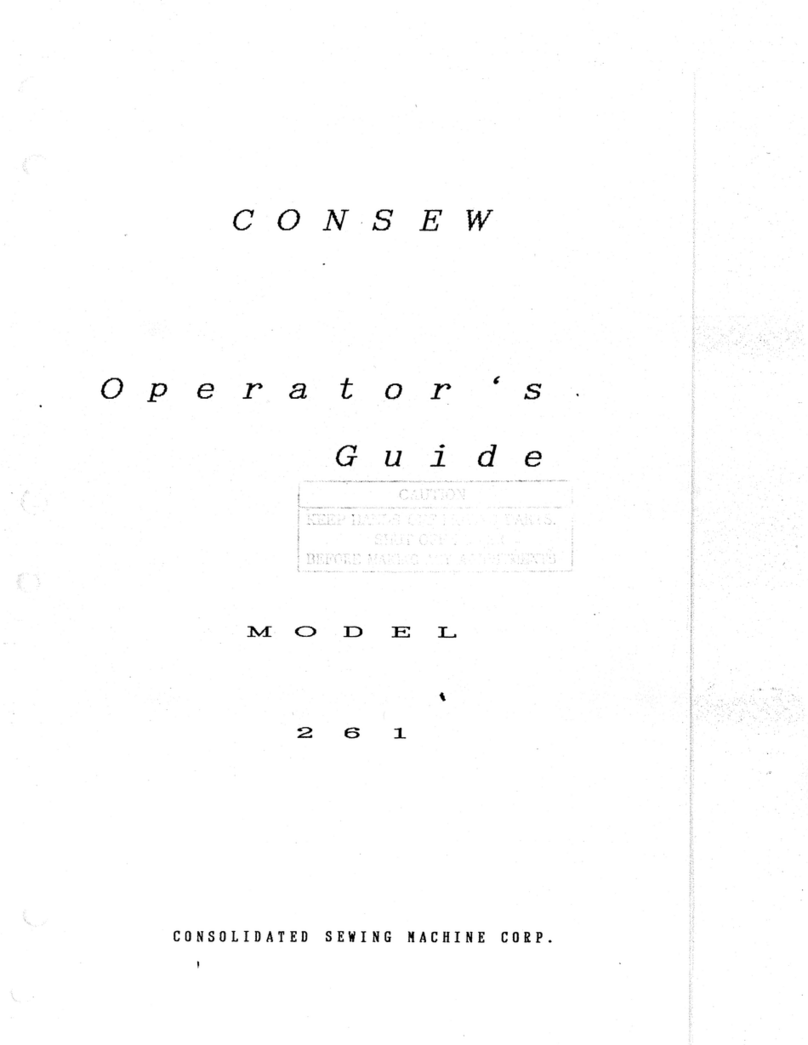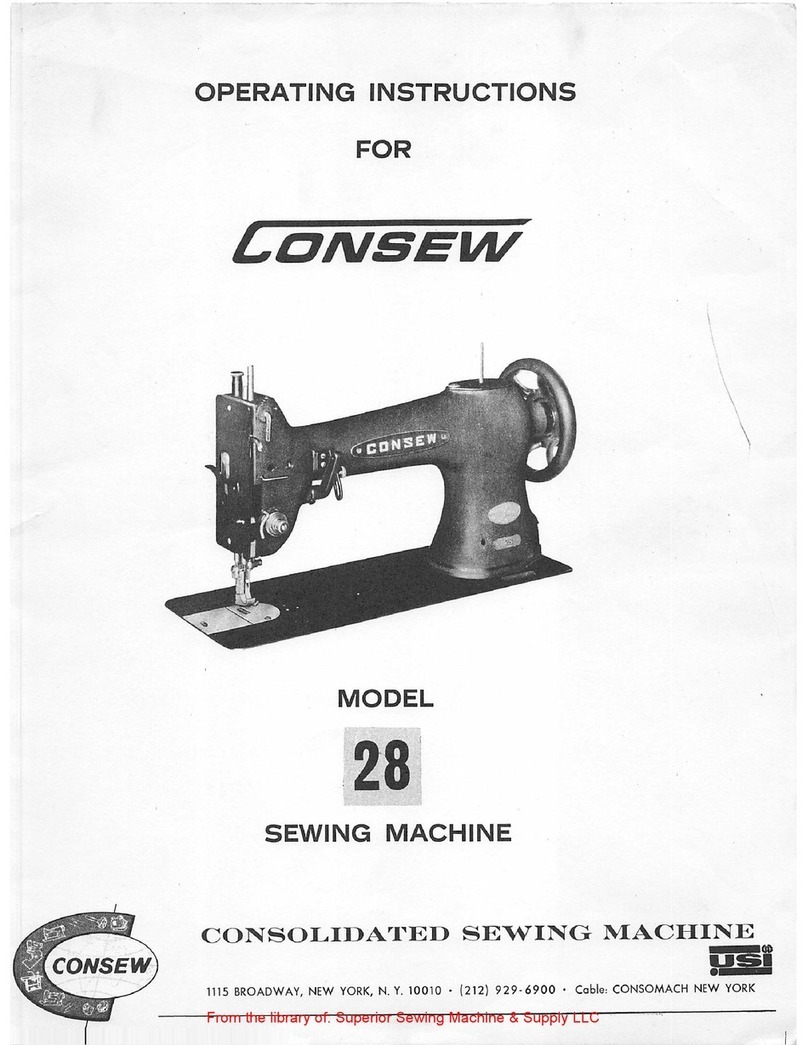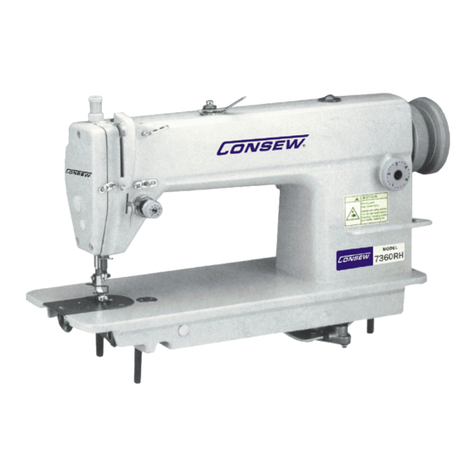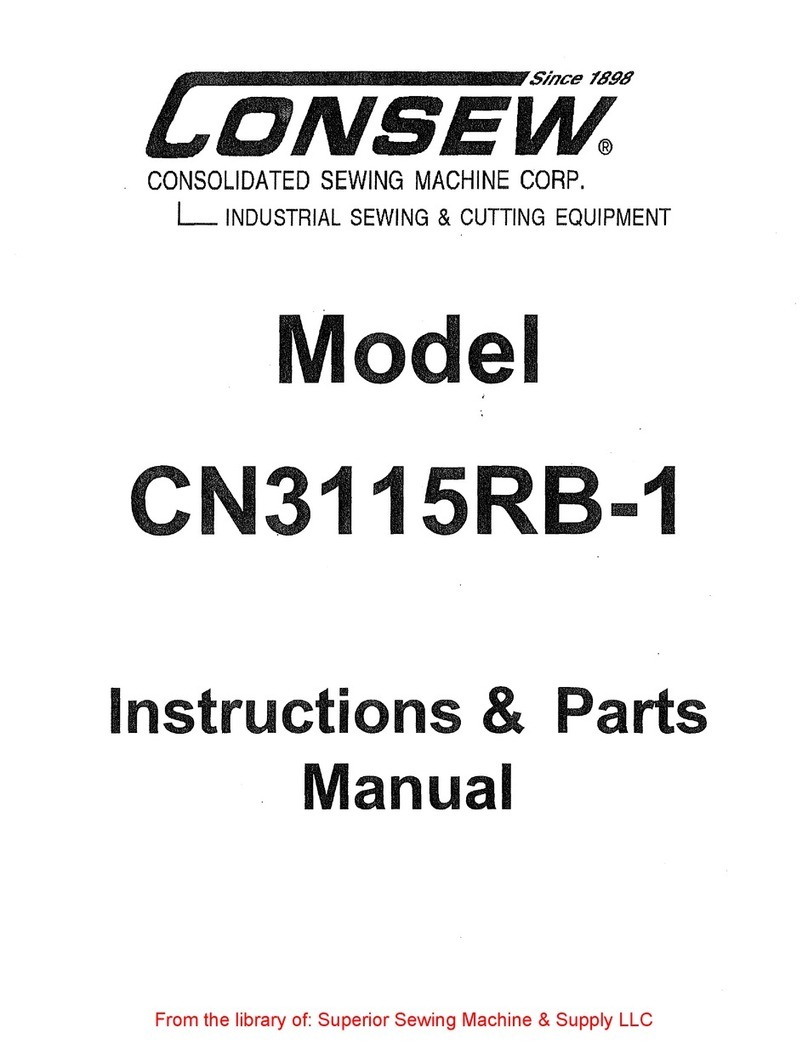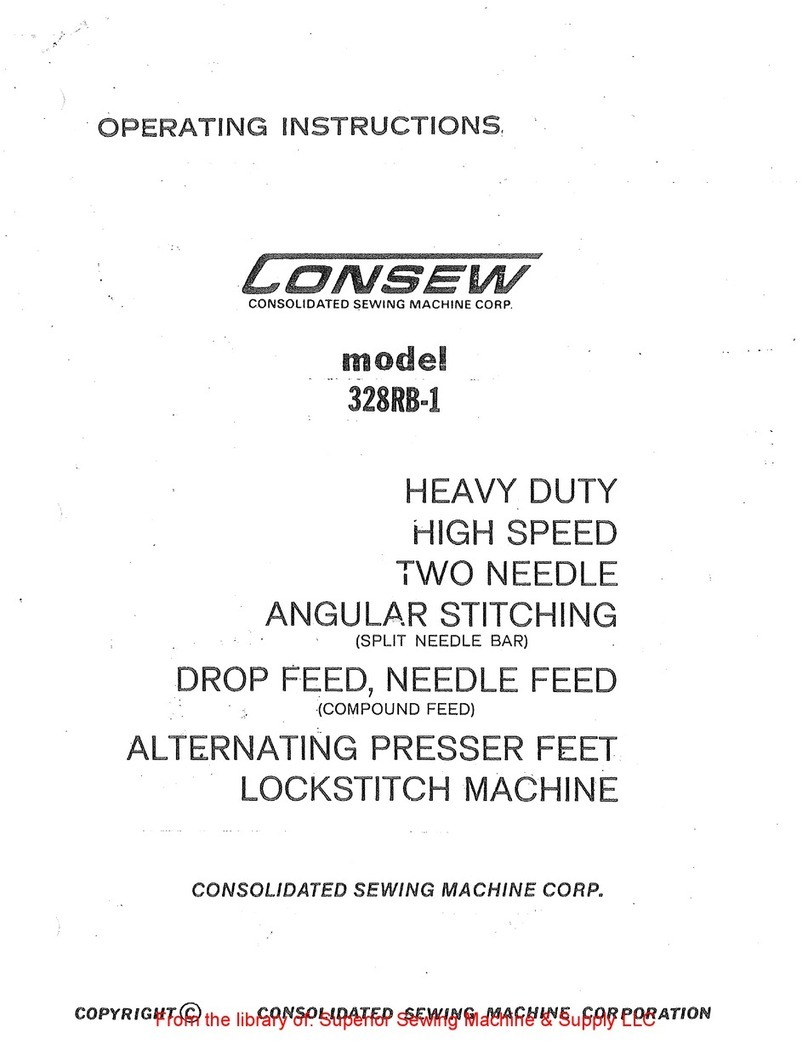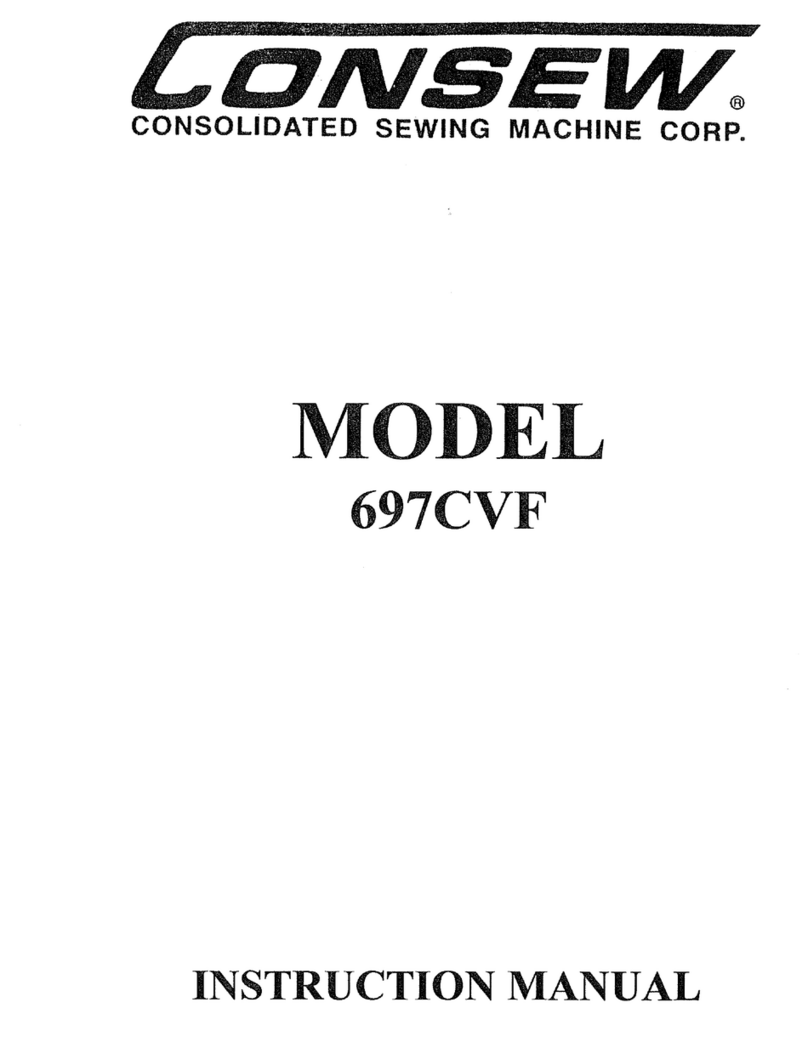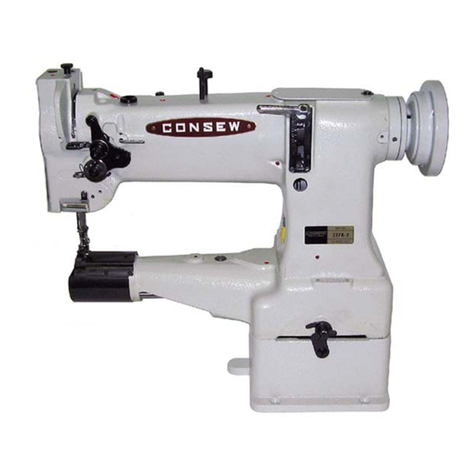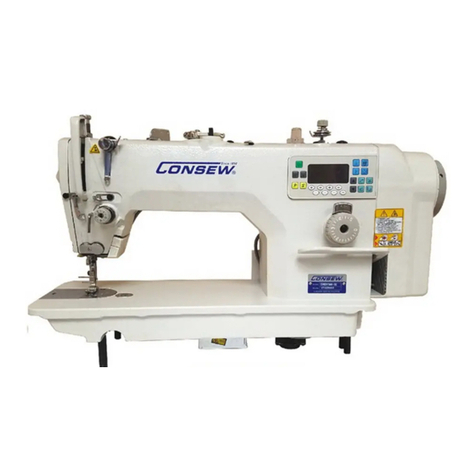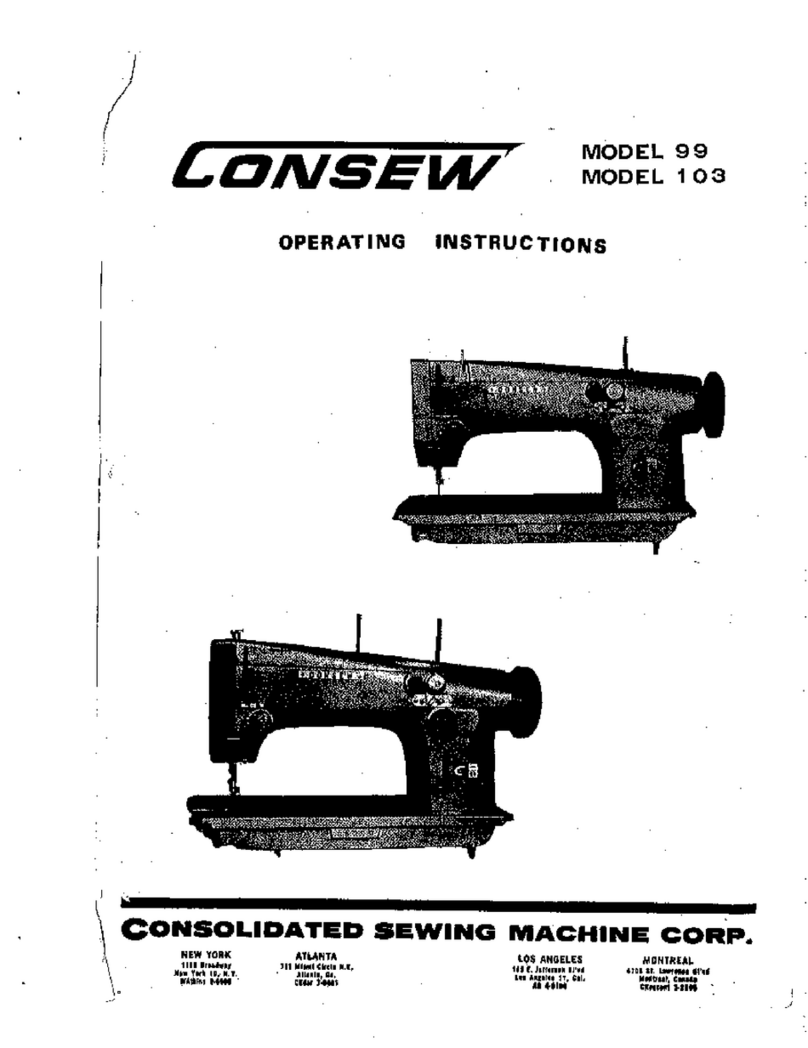REMOVING
AND
INSERTING
THE
BOBBIN
1.Lift the needle bar to its highest point, placethe feed dog at this side in its travel
turning the machine pulley, and open the slide plate (A, Fig.2)
2.Pass left hand under table into opening on drip pan .
With
left thumb and index
finger,
open
the
hinged
latch
( C,Fig.4).
And
pull
bobbin
case
and
bobbin
from
rotary
hook.
While
the
latch
is
held
open,
the
bobbin
will
be
retained
inthe
bobbin
case. Release
of
the latch and turning
of
the open side
of
the bobbin case down
ward
will cause the bobbin to drop out.
3.Hold the bobbin between the thumb and the forefinger of your right hand and pull
out a length of about 5cm of thread . Holding the bobbin case in your left hand
turn the open side up and place the threaded bobbin into it. (Fig.9)
4.With the right hand guidethe thread into the slot in the edge of the bobbin case.
Then pull the thread to the left, under the tension spring (0,Fig.9) and into the
delivery eye . In order to keep the bobbin from dropping out
of
the case when it is
turned with the open side down , always keep the hinged latch (C,Fig.4) at the front
of
the bobbin case open.
5.Take the threaded bobbin case by the latch (C,Fig.4) and place it on the center stud
of
the bobbin case holder. Release latch and press bobbin case on to center stud until
the
latch
catches
the
undercut
thereon
with
a
click
that
can
be
heard.
Permit
about
5cm
of
bobbin thread to hand down freely. Be sure to push the slide plate to the
right before starting to sew.
Fig.9

